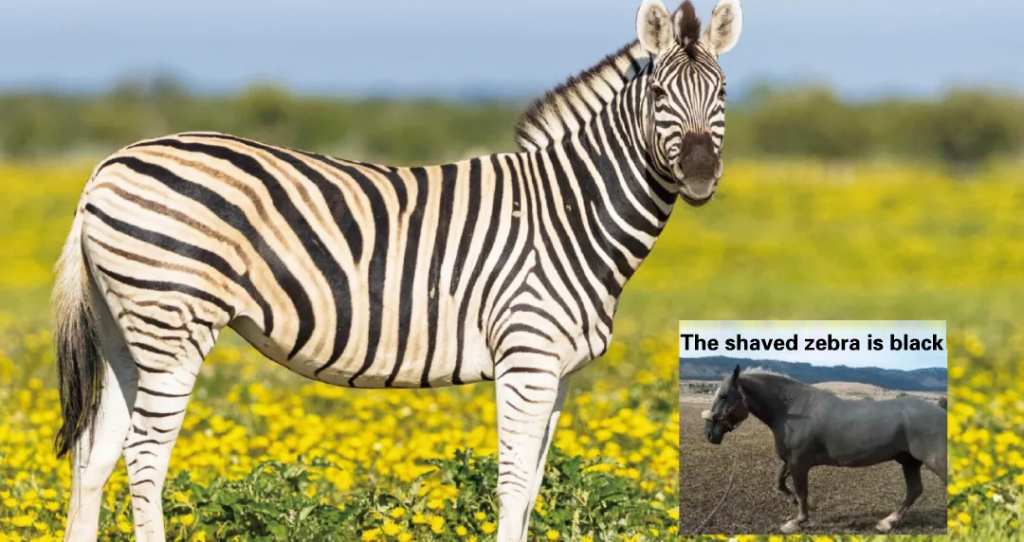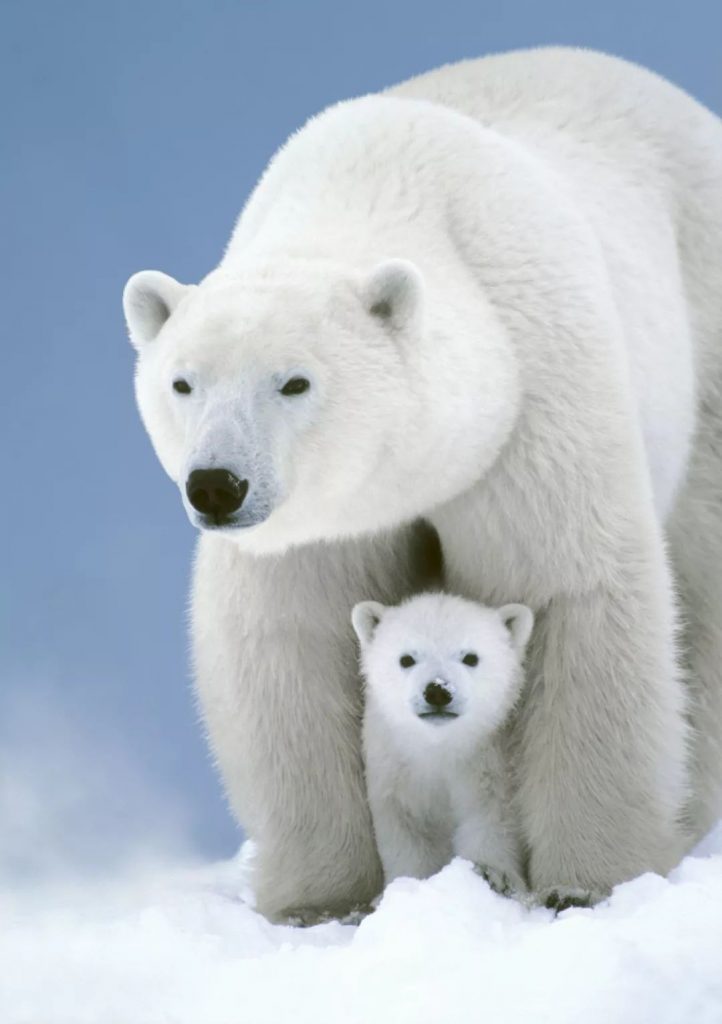
The zebra has a “zebra crossing”, the chubby panda is black and white, the polar bear is white all over, but the domestic cat has colorful hair. If you take off the “clothes” of these animals, you may be surprised that they are so “inconsistent”.
Big difference in coat color and skin color

Zebra hair is unique in the animal kingdom. Their black and white stripes are usually similar in width, evenly distributed, and symmetrical. However, how does this “zebra crossing”-like hair grow? Is it like the zebra crossing on our highway, made by brushing white stripes on the black underside?
It’s easy to get the answer, just shave off the zebra hair and take a look. When the scientists shaved all the black and white hairs of the zebras, they found that the skin of the zebras was indeed black like an asphalt road. The cause of zebra black skin is the same as that of most animals, including humans, because it is caused by the deposition of melanin.
However, unlike the zebra crossing, in addition to the white hair, the zebra also grows black hair, so that it can form stripes of different lengths and widths on different parts of the body, and what kind of black and white stripes will eventually form has been determined as early as the embryonic period.

What is the skin color of a giant panda with black and white fur like a zebra? Maybe you will think that it is also black without hesitation. On the contrary, the giant panda has white skin. Once there was a giant panda fractured because of a fight with a companion. In order to treat it, the veterinarian shaved off the hair of its hind limbs.
Only then did they discover that the giant panda originally had a pair of snow-white legs. The skin color of panda cubs is also pink like that of human babies. Therefore, it can be speculated that the skin color of pandas is similar to that of Caucasians, and there is less eumelanin in the hair follicles under the skin that makes the skin color black.

What is even more unexpected is that the white-looking polar bear turned out to be a black “bear” species with a black skin.

Scientists believe that this black skin can absorb the heat from the sun to the maximum, which is beneficial for polar bears to keep warm in cold polar regions. The so-called white hair is actually colorless and transparent, which is also conducive to direct sunlight on its black skin.

Look at the cats, dogs, and cats around us. Each of them has a unique coat color, solid, spotted, and striped, but these colorful hairs don’t have a matching skin color underneath. They are just ordinary. The white or black skin. The same is true for human beings. According to different races, our hair and body hair vary from black to blonde, and skin tones are also white, brown, yellow, and black. The two are often not compatible.
Why is there such a big difference between coat color and skin color?
There is a difference between hair color and skin color
The basic components of humans and animals’ coat color and skin color are melanocytes, but the structure and composition of melanocytes are different, and the final coat color and skin color are also different.

Epidermal melanocytes are cells with a large amount of melanin. They are densely arranged in the epidermis of the skin. The more melanin stored in epidermal melanocytes, the darker the skin tone. The hair follicle melanocytes are the main factors that determine the hair color. Hair follicle melanocytes are homologous to the melanocytes of the skin, but because it ultimately reaches the root of the hair-the hair follicle, which provides nutrients and pigment to the hair, it is called hair follicle melanocyte.
Whether it is epidermal melanocytes or hair follicle melanocytes, they can produce two kinds of melanin, eumelanin and pheomelanin. The difference in the content and structure of the two melanins makes the hair and skin appear different colors. The more eumelanin content, the darker the fur color, while pheomelanin makes the fur appear red or orange, and may also appear orange, light cream, and golden yellow. When the pigment cells are tightly arranged, the fur is darker, and when the pigment cells are loosely distributed, the color is lighter.
Take cats and dogs as examples

Under the regulation of genes, the distribution and content of the two pigments in the skin and hair are often different. There are many genes that control the color of fur, and the mechanism of action is also very complicated. Let us take cats and dogs as an example to understand a little bit.

The epidermal melanocytes of dogs only contain eumelanin but no pheomelanin, so the skin of a dog will only show eumelanin-related colors, including black and brown. The black or brown color of the dog’s nose we see is determined by epidermal melanocytes.
Because the dog’s body is usually covered with thick hair, which can play a role in shading and keeping warm, the epidermal melanocytes of the skin covered by the body hair usually do not produce pigment, and the skin is mostly white. But if a dog is often tanned after being shaved, it will be tanned like a human being, which is the eumelanin being tanned.
Dogs’ coat color is much more colorful than skin color, because under the control of hair color genes, the types and content of pigments produced by melanocytes in different parts of the dog’s hair follicles vary. Some cells produce eumelanin, other cells produce pheomelanin, some cells have both pigments, and some cells do not produce any pigment.
Most of the time, the dog’s coat color will contain both eumelanin and pheomelanin. When the black and red produced by the two pigments are evenly mixed together, it is a turbid brown from a distance, and the different colors of the hair can be distinguished from a distance.
The body hair of many mammals will show this color, because it is a good protective color in the wild. Hair without pigment appears white, and sometimes the content of pheomelanin is small or sparsely distributed, and the dog’s hair will also become white.
The cause of the skin color of cats is similar to that of dogs, but the cause of coat color is more complicated. There are two genes that control the production of melanin in cats, the B gene and the O gene. Among them, gene B manages the amount of eumelanin, which determines the depth of coat color. O gene can produce pheomelanin, making cat hair appear yellow.
The O gene only exists on the sex chromosome X of cats. Therefore, male cats usually appear as a single black or yellow. Some species may be mixed with white hair. Only female cats can have two colors of yellow and black or three colors of yellow and black at the same time.
There are also many sources of white hair on cats. The white gene W can control whether melanocytes can reach the surface of the skin and whether they produce melanin. When it works, the cat’s hair will appear white.
Albino gene is another major reason for cats to grow white hair. It can affect the enzyme responsible for processing melanin. The higher the temperature, the stronger the inhibitory effect. Therefore, most of the body hair of cats with albino genes is white, and the face, ears, tail, limbs and other areas with lower body temperature will have darker hair.
The color of animal fur is actually full of secrets that are difficult for humans to penetrate, and there are many questions waiting for further research.
Comments